Fort Pulaski National Monument
For much of the 19th century, masonry fortifications were the United States’ main defense against overseas enemies. However, during the Civil War, new technology proved its superiority to these forts. The Union army used rifled cannon and compelled the Confederate garrison inside Fort Pulaski to surrender. The siege was a landmark experiment in the history of military science and invention.
From Interstate I-95, take Exit 99 onto Interstate I-16 East (James L Gillis Memorial Hwy) for 7 miles. Take Exit 164A onto Interstate I-516 East toward US-80 East. Take Exit 3 (US-17 S/US-80 E) toward US-80 East. Turn left onto Ocean Highway, Ogeechee Rd (US-17 N, US-80 East). Bear right onto West Victory Drive (US-80 East). Continue on US-80 East for 13 miles. GPS Coordinates for Fort Pulaski National Monument: N32° 01.680 W080° 53.525
- Biking
- Mountain Biking
- Food
- Picnicking
- Guided Tours
- Self-Guided Tours - Walking
- Hiking
- Front-Country Hiking
- Living History
- Historic Weapons Demonstration
- Junior Ranger Program
- Park Film
- Museum Exhibits
- Architecture and Building
- African American Heritage
- American Revolution
- Arts
- Photography
- Birthplace
- Burial, Cemetery and Gravesite
- Engineering
- Enslavement
- Forts
- Incarceration
- Jails and Prisons
- Maritime
- Coastal Defenses
- Lighthouses
- Military
- Artillery
- US Army
- US Navy
- US Coast Guard
- Battlefields
- Monuments and Memorials
- Schools and Education
- Science, Technology and Innovation
- Social Movements
- Abolition Movement
- Civil Rights
- Transportation
- Roads, Routes and Highways
- Wars and Conflicts
- Colonial/European Contact Conflicts
- War of 1812
- Civil War
- Spanish-American War
- Animals
- Alligators or Crocodiles
- Birds
- Cats (wild)
- Tortoises and Turtles
- Climate Change
- Coasts, Islands and Atolls
- Trails
- Wetlands
- Marshes
The Battered Walls of Fort Pulaski
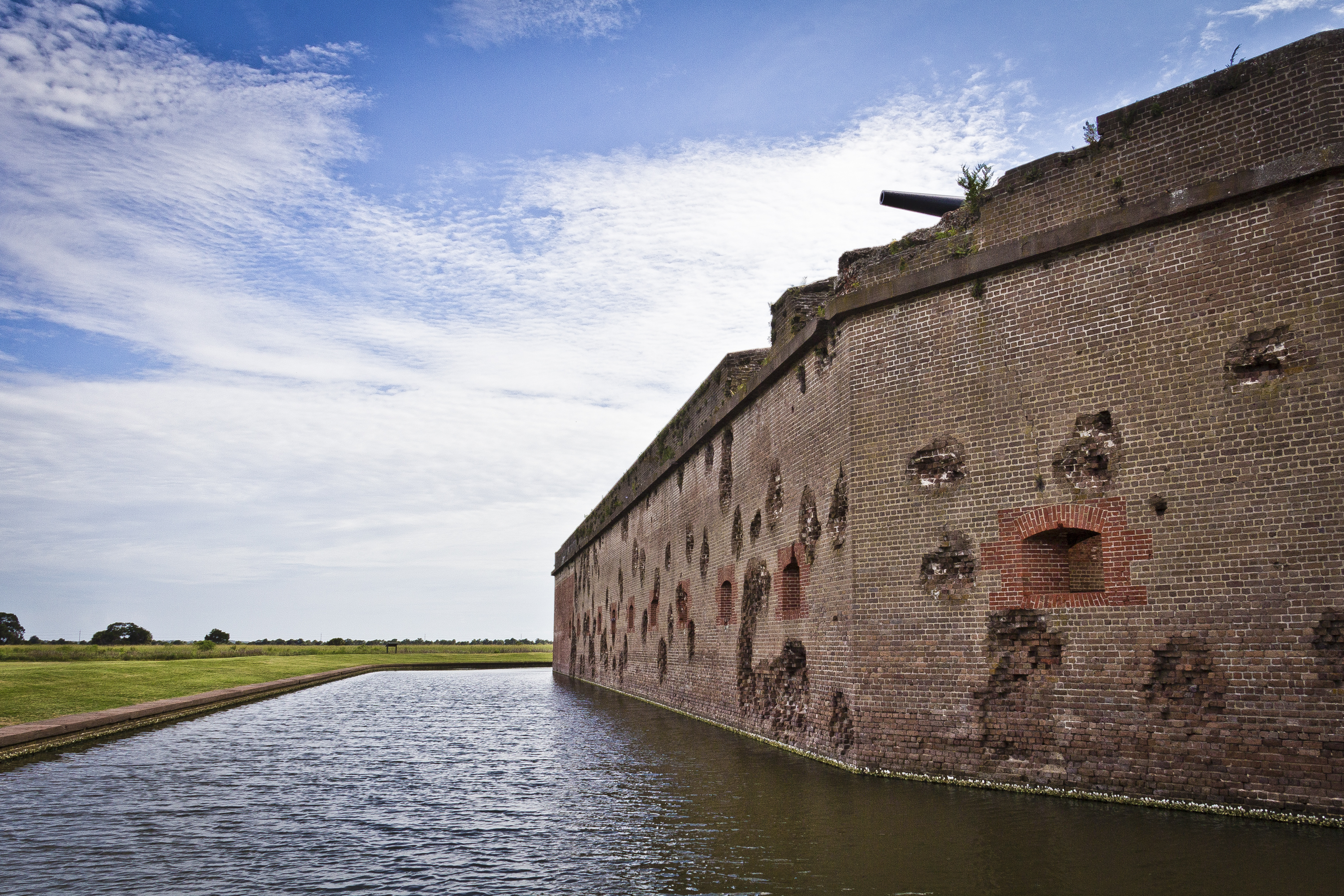
A walk along the outside of Fort Pulaski reveals damaged walls over 150 years after the Civil War.
The Casemates of a Fort
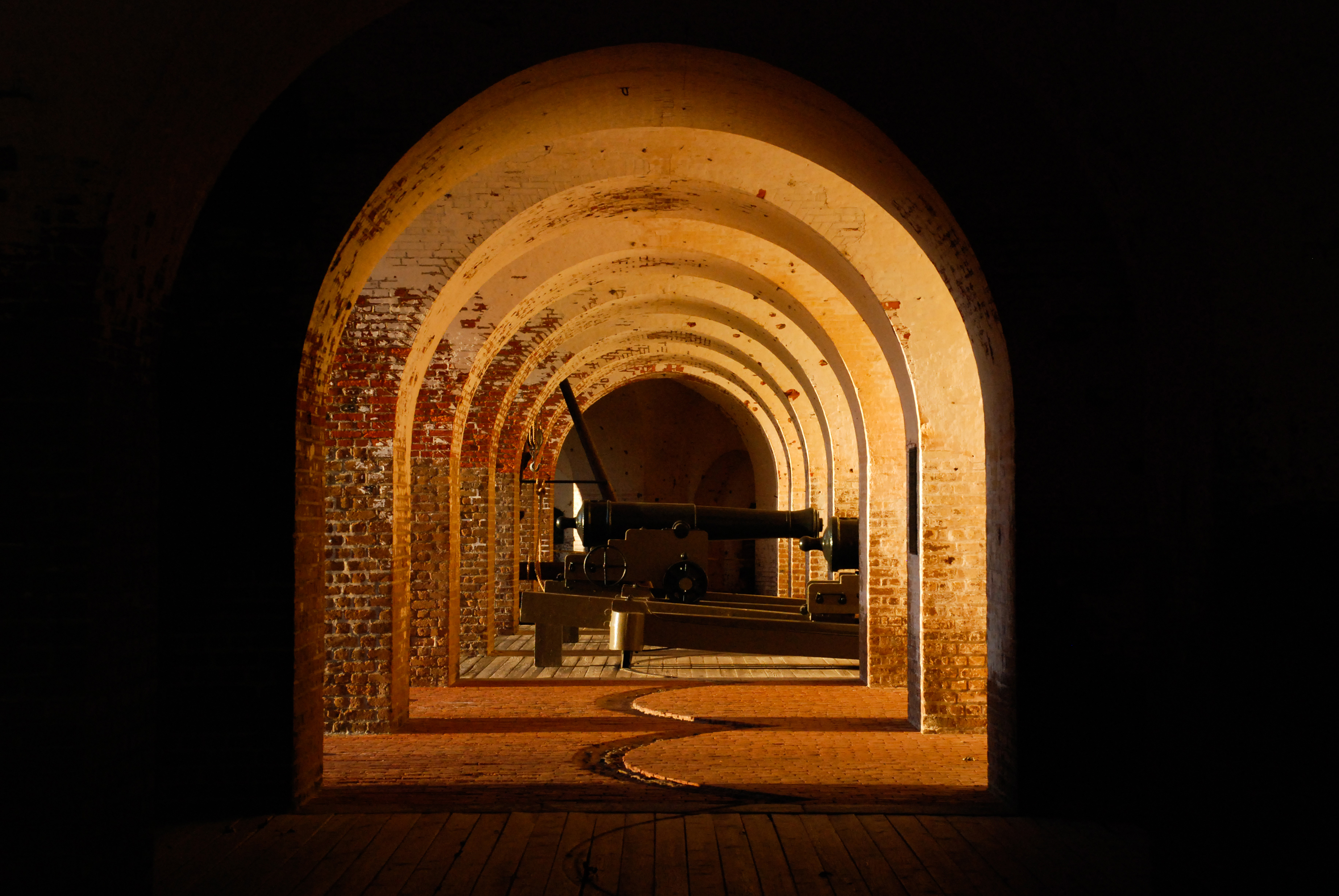
Fort Pulaski shows off its classic arched architecture and cannon.
The Cockspur Island Lighthouse
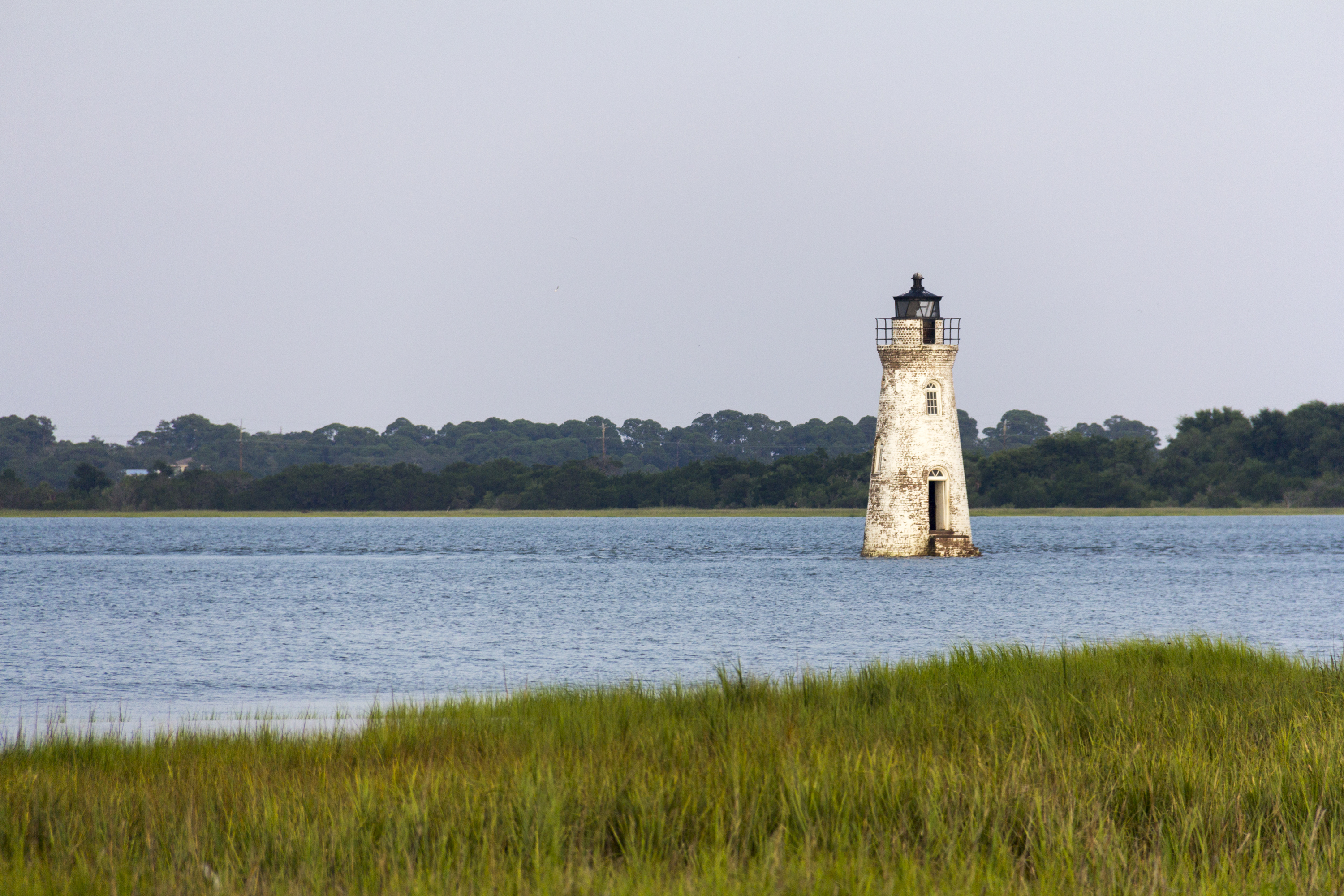
The Cockspur Island Lighthouse still stands guard over the south channel of the Savannah River and Fort Pulaski.
The Sentinel
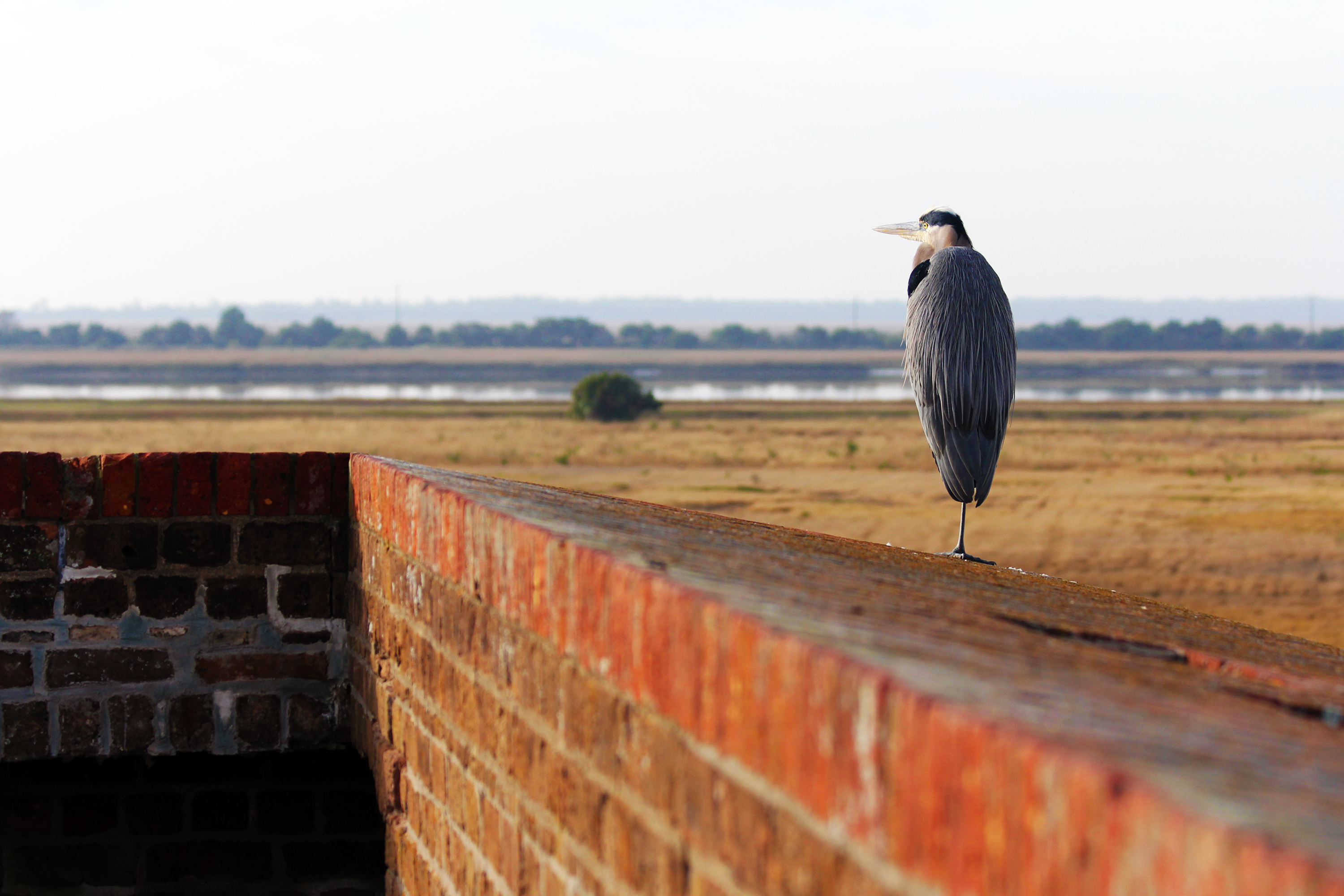
A great blue heron stands on the top of Fort Pulaski like a lonely sentinel.
The Ladies of a Fort
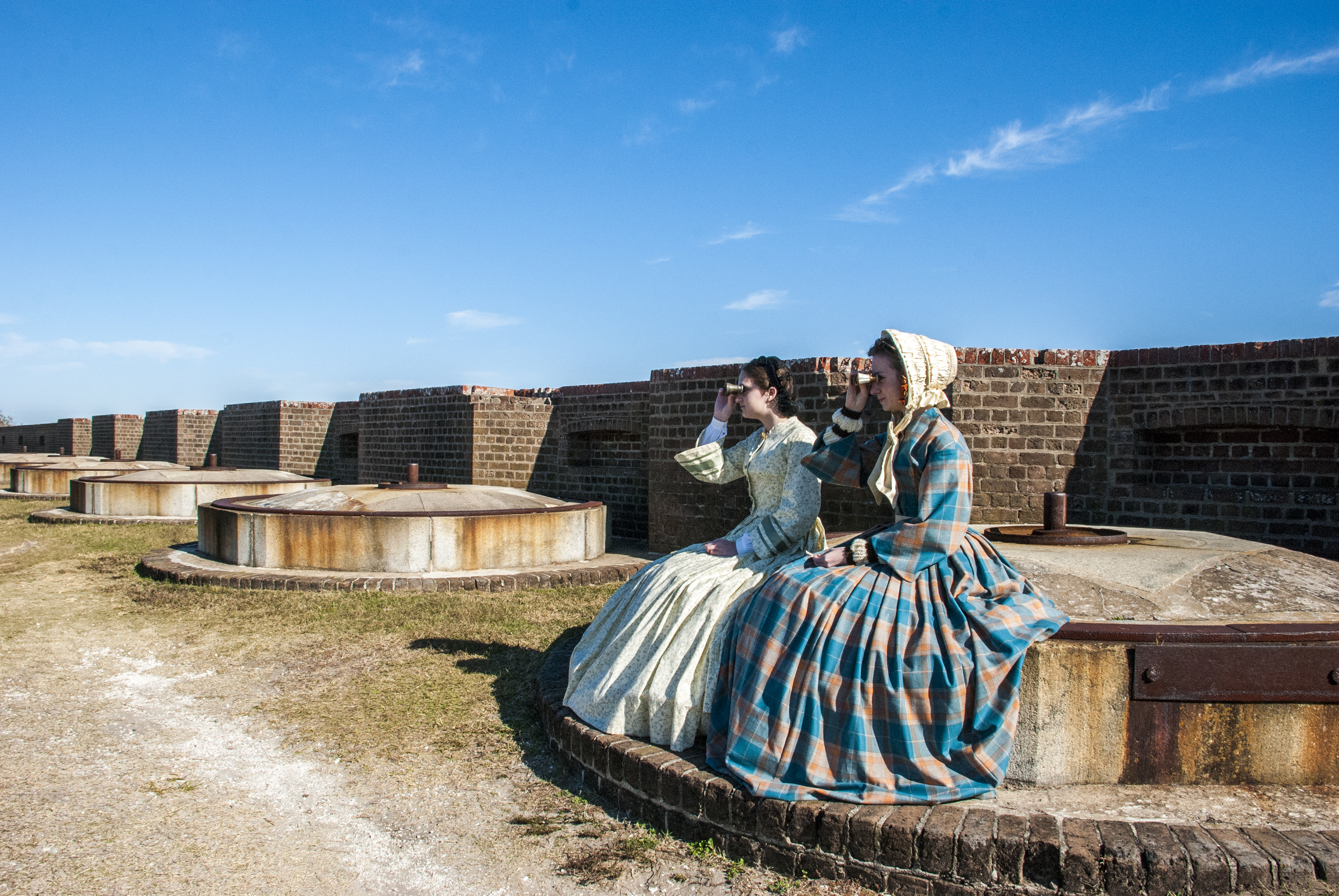
Volunteer living historians play an important role for the National Park Service and Fort Pulaski National Monument.
Night Cannon Firing at Fort Pulaski

Artillery demonstrations are an important part of the interpretation program at Fort Pulaski.